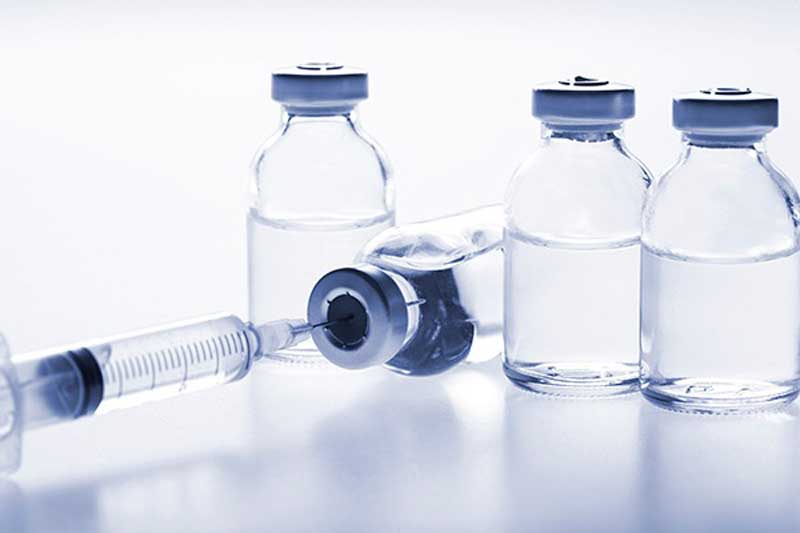
August 27, 2024
Esophagogastric Anastomosis In Rats: Boosted Healing By Bpc 157 And L-arginine, Exacerbated By L-name
Brain-gut Axis And Pentadecapeptide Bpc 157: Theoretical And Practical Implications Straight partnerships were observed in between AUC0-- t and BPC157 doses, in addition to between Cmax and BPC157 doses (Numbers 2D, E). The outright bioavailability observed after IM administration of each dose in dogs was 45.27%, 47.64%, and 50.56%, respectively. After duplicated IM management of BPC157 at 30 μg/ kg for seven successive days, the plasma concentration versus time curve resembled that observed after a single IM injection of 30 μg/ kg (Figure 2C). Nonetheless, the pharmacokinetic specifications after repeated IM administration changed somewhat contrasted to those observed after a single IM injection, with a little decrease in Cmax and t1/2 and an increase in Tmax.Impact Of Photodynamic Therapy On Regional Muscle Treatment In A Rat Muscle Mass Injury Model: A Controlled Test
Stomach compartment disorder looked like a multiple occlusion syndrome that could not be stayed clear of unless therapy was given. Consistently, mutual changes in the stomach, thoracic, and mind dental caries (Depauw et al., 2019) rapidly appeared as components of vascular failure. For that reason, in the rats with intra-abdominal high blood pressure, multiorgan failure (i.e., stomach, brain, heart, liver, and kidney lesions), portal and caval high blood pressure, aortal hypotension, intracranial (superior sagittal sinus) hypertension, and generalised thrombosis showed up. This brought about generalized tension, generalized Virchow triad discussion, and severe ECG disruptions; treatment was able to supply appropriate settlement (i.e., activation of collateral paths to reestablish blood flow), both rapid and sustained, as demonstrated with BPC 157 therapy. As a prime and functional verification, rats with significant vessel ligation and occlusion, in either artery and/or vein, and either peripherally or centrally, exhibited a comparable syndrome (Vukojevic et al., 2018; Gojkovic et al., 2020; Kolovrat et al., 2020; Gojkovic et al., 2021a; Knezevic et al., 2021a; Knezevic et al., 2021a; Knezevic et al., 2021b). Therefore, there may be a common failure to respond, causing inherent vascular failing upon significant vessel occlusion (ligation) (Vukojevic et al., 2018; Gojkovic et al., 2020; Kolovrat et al., 2020; Gojkovic et al., 2021a; Knezevic et al., 2021a; Knezevic et al., 2021a; Knezevic et al., 2021b) along with upon the induction of high intra-abdominal stress, with all vessels pressed.BPC-157 and TB-500: Inflammation, Tissue Damage, and More - The Portugal News
BPC-157 and TB-500: Inflammation, Tissue Damage, and More.
Posted: Tue, 19 Sep 2023 07:00:00 GMT [source]
Illuminating The Peptide's Mechanism Of Activity Within Systems
BPC 157, also described as Bepecin, PL 14736, and PL10, is a human gastric juice-derived protein. As a partial sequence of human gastric protein BPC, BPC 157 is a synthetic amino acid piece. It is shown to demonstrate recovery homes throughout several kinds of wounds, including wounds of the skin, stomach ulcers, cornea, and muscle mass. Significantly, BPC 157 can additionally provide therapeutic advantage for harmed tendons, ligaments, skeletal muscles, and bones1,2.Data Availability Statement
BPC 157 has actually been shown to aid promote muscle healing, which might speed up the recuperation procedure for individuals that have sustained an injury. BPC 157 has actually been shown to shield cells from damages, which could help reduce the risk of tissue damage throughout the recovery process. Penetrating the midsts of BPC-157's therapeutic impact results in a discovery regarding its communication with details cell surface area receptors.- This peptide molecule has the possible to help with a wide range of conditions, making it beneficial for a selection of individuals.
- The other way around, the stabilized site and caval stress and aortal stress as a cause-consequence are persuading proof of the operating "bypassing crucial" (i.e., the azygos capillary).
- The observations of the here and now research and previous security examination and pharmacodynamic research study will certainly supply fundamental details for additionally thorough professional research.
- Some researches have actually suggested that BPC-157 might hinder lump development in specific cancer designs.
What is the BPC-157 claim?
Novo claimed the lawsuits intend to quit the two pharmacies from selling products asserting to contain semaglutide - the cornerstone in Wegovy and Ozempic - and avoid Wells Drug store from declaring its products are FDA authorized or that BPC-157 has health and wellness advantages without making clients familiar with its safety and security dangers.


Social Links